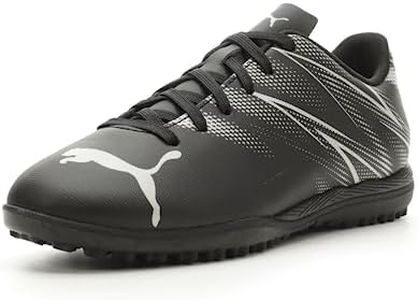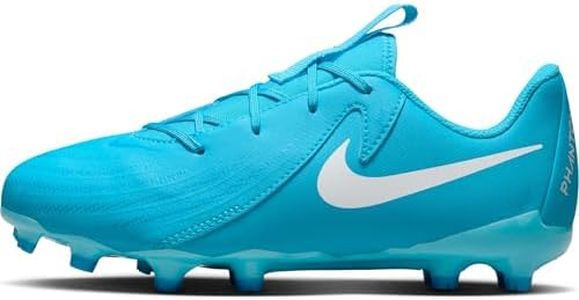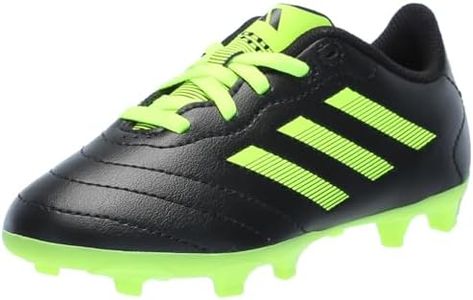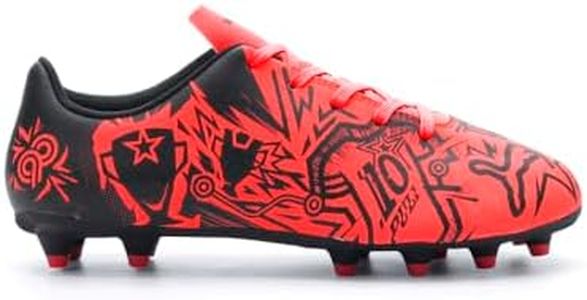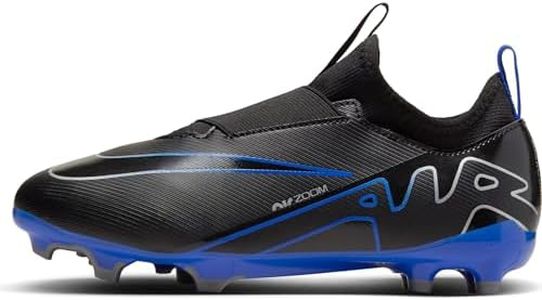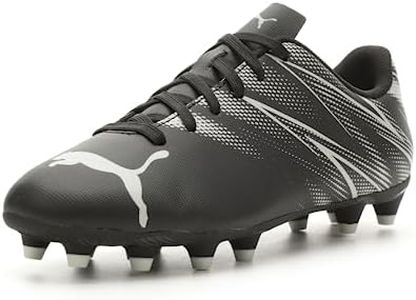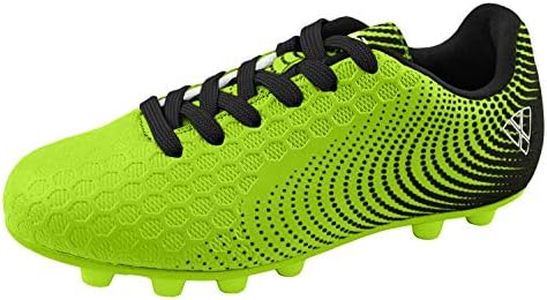We Use CookiesWe use cookies to enhance the security, performance,
functionality and for analytical and promotional activities. By continuing to browse this site you
are agreeing to our privacy policy
10 Best Youth Football Cleats
From leading brands and best sellers available on the web.Buying Guide for the Best Youth Football Cleats
Choosing the right youth football cleats can make a big difference in your child's comfort, performance, and safety on the field. It's important to focus on fit, comfort, and features that match your young player’s position, playing surface, and performance needs. Knowing which key features matter most can help you make a smart choice, ensuring your child feels confident and protected during games and practice.Fit and SizingFit and sizing refer to how well the cleats conform to the shape of your child’s foot and what size will provide the best balance of comfort and stability. Properly fitting cleats reduce the risk of blisters and injuries, and improve control and movement on the field. Generally, cleats should fit snugly with about a thumb’s width of space at the toe. Youth feet grow quickly, but avoid buying overly large cleats 'to grow into' as this can cause discomfort and limit performance. Always have your child try them on with game socks, and check for any pressure points or slipperiness.
Cleat Type (Molded vs. Detachable)Cleat type refers to the way the studs (the bottom parts that grip the ground) are attached to the shoe. Molded cleats have permanently attached studs and are generally more durable, require less maintenance, and are ideal for beginners or casual players. Detachable cleats can have the studs changed or replaced, allowing for adjustments based on field conditions, and are often used by more advanced or older players. For most youth players, molded cleats provide a good balance of grip and safety.
Cleat MaterialThe material of the cleat can be either synthetic or leather. Synthetic materials are lightweight, affordable, and dry quickly, making them well suited for active kids and frequent play. Leather cleats offer a softer, more comfortable fit and better ball feel, but may be heavier and require more care to maintain. Most youth players do well with synthetic cleats because they’re easier to clean and durable enough to handle lots of use.
Ankle Cut (Low, Mid, High)Ankle cut describes how high the cleat extends up the ankle. Low-cut cleats provide maximum freedom of movement and speed, while mid-cut offer a balance between movement and ankle support, and high-cut cleats give the most ankle protection and stability, which can be useful for certain positions or players prone to ankle injuries. For most young players, mid-cut cleats are a safe choice since they provide good support without being too restrictive.
Traction PatternTraction pattern refers to the shape and arrangement of studs on the sole, which affects grip on different playing surfaces. Some cleats are designed for natural grass, others for artificial turf, and some are versatile for multiple surfaces. Rounded or bladed studs each have slightly different grip characteristics. Consider where your child will play most often—grass, turf, or both—and choose a cleat designed for that surface to prevent slips and ensure better control.
WeightWeight is all about how heavy or light the cleat feels on the foot. Lighter cleats can help with speed and agility, especially for positions that require quick movements, while slightly heavier cleats may provide more protection. For youth players, choosing a cleat that feels comfortable and not cumbersome during running and jumping is key, rather than just focusing on ultra-lightweight options.
Comfort and CushioningComfort and cushioning refer to how soft and supportive the cleat feels, both underfoot and around the heel and ankle. Adequate cushioning can help reduce fatigue and protect against injuries, especially during long practices or games. If possible, have your child walk and do some quick movements in the cleats to make sure there aren't any uncomfortable spots. Kids with wider feet or special needs may require more attention to these features.

